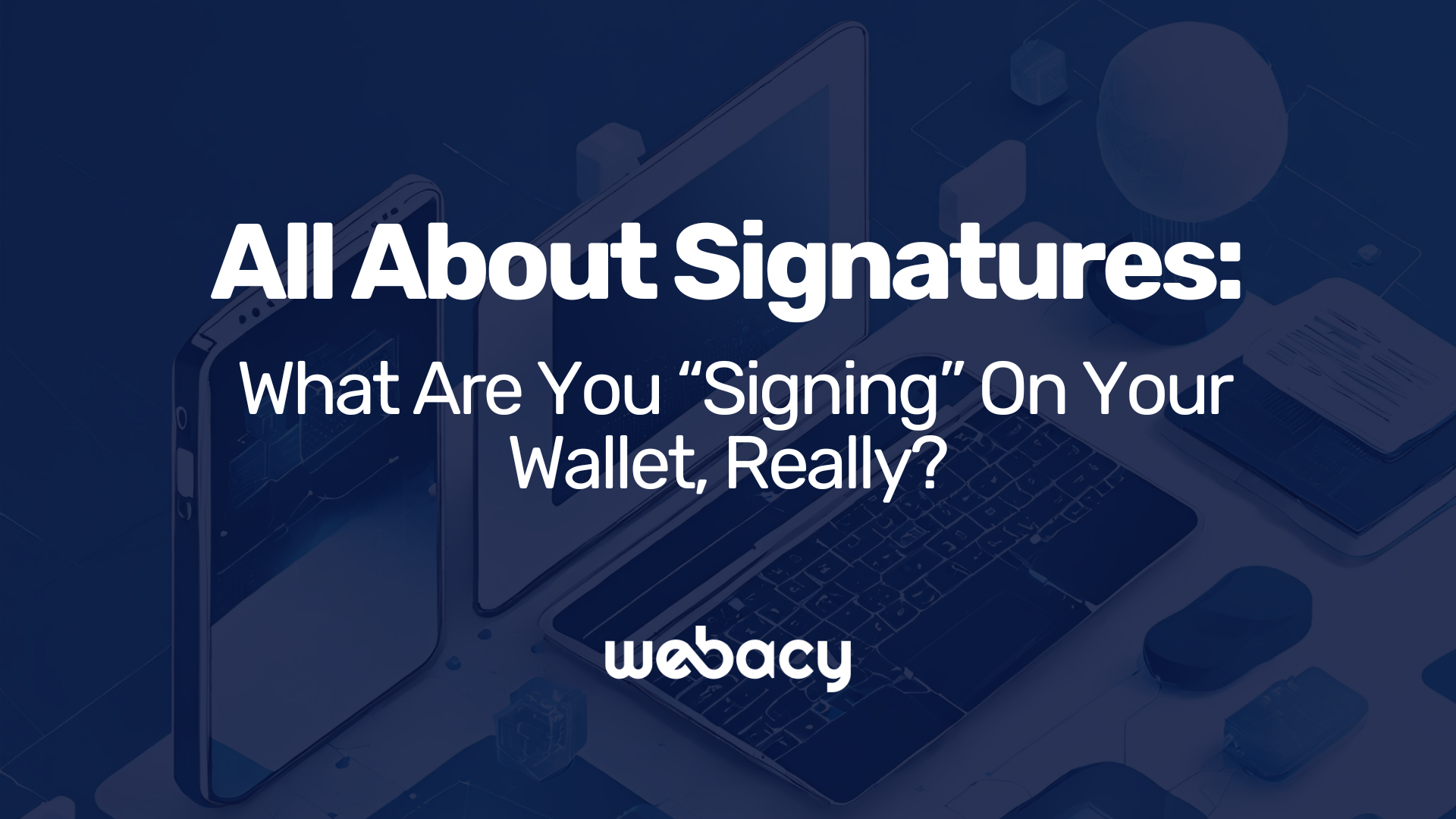All About Signatures: What Are You “Signing” On Your Wallet, Really?

In the world of blockchain, your digital signature is a powerful tool. It's the equivalent of saying "yes" to a transaction or an agreement, but in the digital landscape of cryptocurrencies and NFTs, it holds much more weight. These signatures secure your virtual assets and confirm your identity, acting as a decisive factor in managing your digital possessions. As you navigate this space, understanding the significance of each signature you make is crucial; a single misstep can have significant consequences. This article aims to provide you with the knowledge to make informed decisions about your digital signatures.
What are Wallet Signatures?
Wallet signatures are a way to prove ownership or authorization in the digital world, particularly in cryptocurrencies and blockchain technology. When you have a digital wallet, it comes with a pair of keys: a public key and a private key. The public key is like your wallet's address, visible to everyone, while the private key is secret, known only to you.
When you sign a message with your wallet's private key, you create a wallet signature. This signature is unique to both the message and your private key. Others, using your public key, can verify that this signature came from your wallet without seeing your private key. This process ensures security and authenticity in transactions and agreements.
Permit signatures, a subset of wallet signatures, are more specific. They're used in 'typed data' scenarios, where the data has a structured format. This structure makes it easier for contracts on the blockchain to recognize and validate the signature. Again, these signatures are crucial in authorizing transactions or actions on your behalf without revealing your private key.
The Role of Signatures in Gasless Transactions
Signatures play a crucial role in facilitating gasless transactions on blockchain networks like Ethereum. These transactions use a concept known as "meta transactions," where the user signs a message off-chain, indicating their intention to perform a certain action, such as transferring tokens. This signature is then used by a relayer, a third-party service, which submits the transaction to the blockchain on the user's behalf and covers the associated gas fees.
The implementation of gasless transactions requires some modifications to the smart contracts involved. Contracts need to be made compliant with meta-transaction standards, which typically involve incorporating specific functions and mechanisms to handle off-chain signatures. For instance, the EIP-712 standard is often used for this purpose, providing a secure method for signing data in a way that is both human-readable and machine-verifiable.
Relayers, once they receive the signed message from the user, verify its authenticity and execute the transaction on the blockchain. The use of relayers introduces a level of convenience for users, as they can interact with blockchain applications without worrying about gas fees or even holding the native blockchain token (like Ether for Ethereum).
What About Permit-Compliant Tokens?
Permit-compliant tokens, particularly those adhering to EIP-2612, have revolutionized token transfers in the Ethereum ecosystem. This approach allows for gasless and more convenient transactions by enabling users to sign a message off-chain that authorizes a contract to perform certain actions like token transfers. Essentially, it removes the need for a separate transaction to approve token spending, thus saving on gas fees and simplifying the user experience.
However, the convenience of permit signatures comes with potential risks. Scammers can exploit these mechanisms through various methods, such as front-running attacks, where they observe a pending transaction and execute a similar transaction with higher gas fees to get it processed first. There's also the danger of users unwittingly granting permissions to malicious contracts or applications, leading to unauthorized token transfers.
To mitigate these risks, users should take several precautions:
- Limit Approvals: Always review and limit the amount approved for smart contracts. Avoid granting unlimited allowances unless necessary. You can also use Webacy’s Approval management product to revoke unlimited or limited approvals that you may find on your wallet, after they are no longer of use to you.
- Verify Contracts: Prior to token authorization, verify the authenticity and security of the smart contract or application. Relying on well-audited and established platforms can significantly reduce risks. You can also see the risk of a smart contract associated with a token or NFT on your Webacy dashboard.
- Set Expiration Dates: Implementing time limits on approvals by revoking them at a certain time can ensure that permissions automatically become invalid after a designated period, thereby minimizing potential risks over time.
- Educate Yourself: It's important for users to recognize the potential dangers tied to authorizing tokens and to learn the best practices for safely engaging with various systems.
- Regularly Review Approvals: Regularly assessing and withdrawing unneeded approvals can reduce the risk of harm in the event that a platform or contract is breached.
While permit-compliant tokens offer significant benefits in terms of efficiency and cost, users must be vigilant and adopt safe practices to protect their assets from potential scams and fraudulent activities.
Secure Your Digital World with Webacy
Webacy offers a comprehensive solution for monitoring and securing your digital assets in the blockchain space for a safer Web3. While Webacy's Wallet Watch does not send notifications for simple wallet signatures (as these are not on-chain activities), it excels in alerting you to any activity that goes beyond such signatures (which is what can actually touch the balances of your wallet and assets). This includes real-time SMS and email alerts for all inbound and outbound wallet activities, ensuring that you're always informed about the transactions involving your assets.
Note that Webacy's service is designed to help you stay on top of unexpected activities in your wallet. In the event of unusual or suspicious transactions, you can instantly use Webacy's Panic Button. This feature allows you to transfer your assets to a backup wallet immediately, providing an essential layer of security in case of hacks or security compromises.
Here’s to a safer Web3, together!